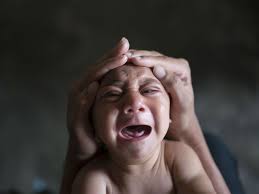LAHORE: Pakistan has the highest rate of newborn mortality in South Asia, revealed a latest report issued by UNICEF in Kathmandu, Nepal.
Pakistan was home to 244,746 of the one million babies who died within 28 days of birth in South Asia in 2015. The South Asia Health Atlas 2016 report compiled by UNICEF reveals that challenges relating to newborn health, and also to under-immunisation remain in the region, including Nepal, Bhutan, Bangladesh, Sri Lanka and Maldives, Afghanistan and India.
Newborn mortality rates (NMR), is defined as deaths per 1,000 live births. Pakistan’s NMR is the highest at 46 followed by Afghanistan at 36, which is unacceptably high compared to the best-performing Maldives and Sri Lanka, where five newborn deaths are reported per 1,000 live births.
Despite making remarkable progress in decreasing the number of newborn deaths by half from 1990 to 2015, South Asia has the highest number of newborn deaths (more than one million in 2015) in the orld.
Furthermore, one in seven children in South Asia is under-immunised with most living in Pakistan, India and Afghanistan.
UNICEF praised Nepal, Bangladesh and Bhutan for making remarkable progress in routine immunisation given their public health challenges.
It said Pakistan, Afghanistan and India need significant improvements in the next few years to bring down newborn death rates.
Giving each child three doses of the DTP vaccine against diphtheria, pertussis and tetanus is the World Health Organisation’s accepted indicator for routine immunisation coverage. In Pakistan, DPT3 coverage was lowest in South Asia with 72% against Bhutan’s 99% and Bangladesh’s 94%. In 2015, more than five million children in South Asia did not receive their third dose of DPT3 and 1,424,651 children were under-immunised children from Pakistan.
UNICEF suggested that solutions are not generally expensive, such as the application of chlorhexidine to the umbilical cord to prevent infections or early initiation of breastfeeding, but they also require systems for training healthcare workers, procurement of supplies and monitoring interventions overtime as well as taking corrective actions where needed.
Newborn death rates are high in most South Asian countries and the region as a whole is off-track to achieve the sustainable development goal target by 2030. Pakistan, Afghanistan and India have the biggest challenges and annual rates of reduction in these three countries need to improve significantly in the next few years.
Report also highlighted antenatal care coverage in Pakistan by region. Balochistan has worst coverage in this regard with 12.2% followed by Khyber Pakhtunkhwa 24%, Gilgit Baltistan 30.9%, Punjab 38.5% and Sindh 44.4%.
Balochistan with 17.8 was reported lowest skilled birth attendance in Pakistan followed by 43.7% in Gilgit Baltistan, 48.3% in Khyber Pakhtunkhwa, 52.5% in Punjab and 60.5% in Sindh. Babies born in the southern part of the country are less likely to survive their first 28 days of life while neonatal mortality rate were highest in Punjab and Balochistan with 63/1,000 followed by 54% in Sindh, 41% in Gilgit Baltistan and 39% in Khyber Pakhtunkhwa.


